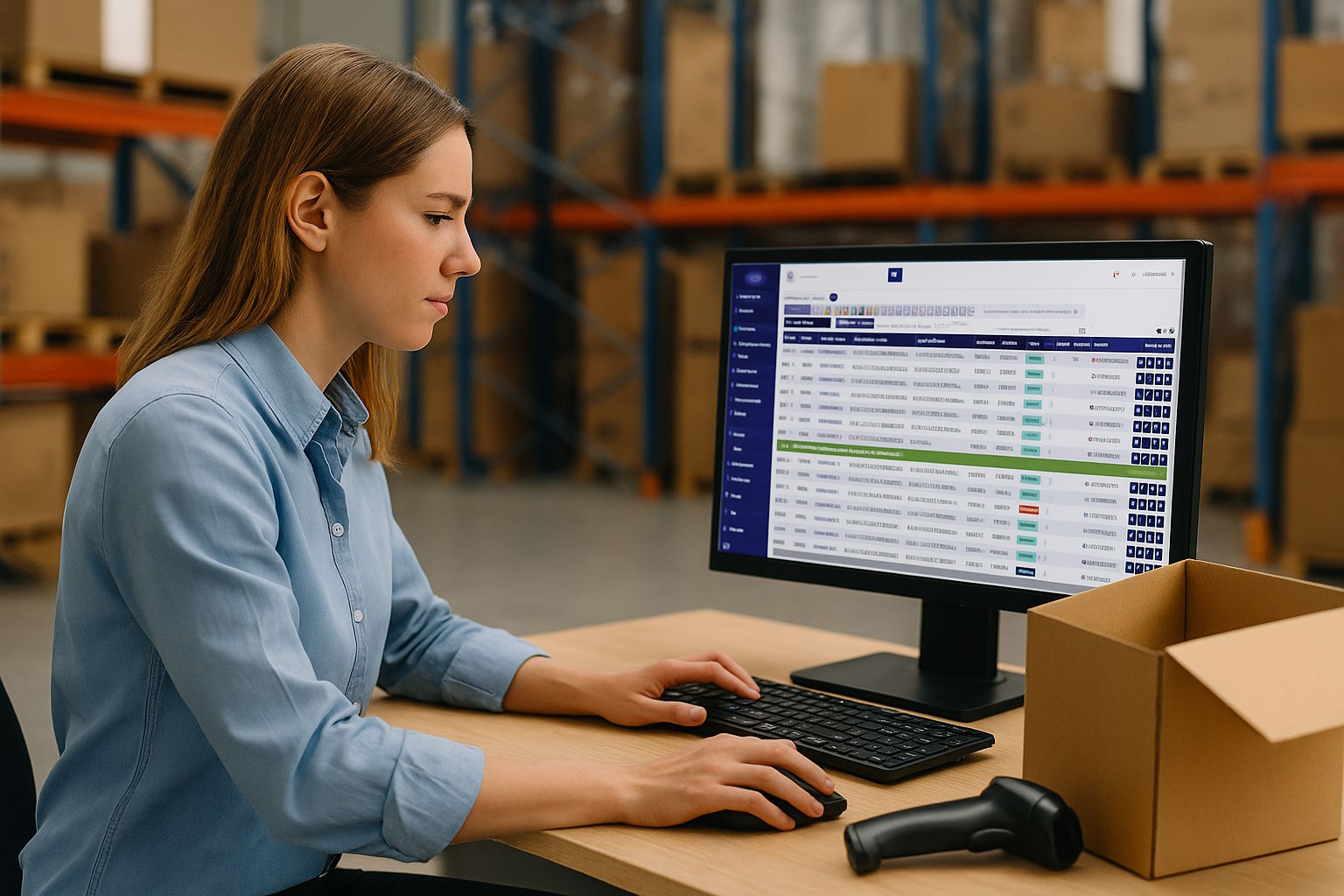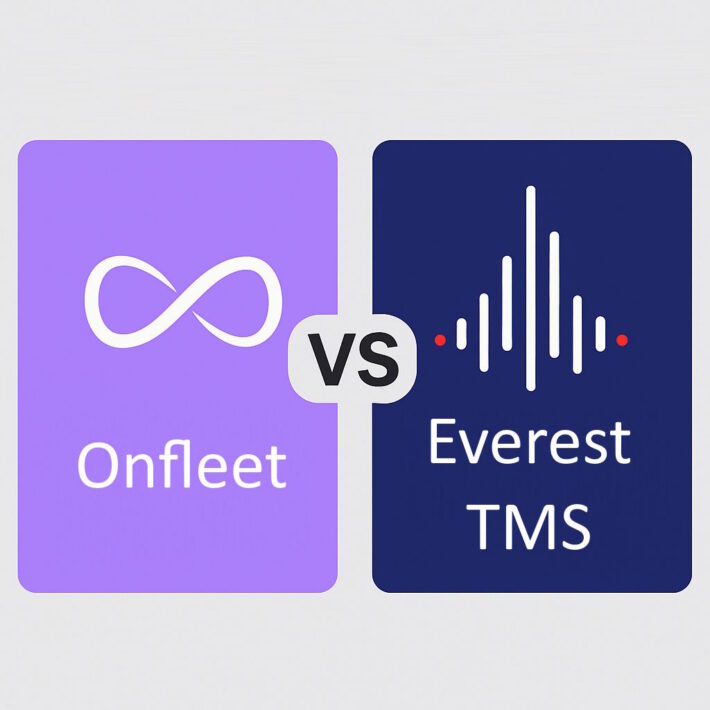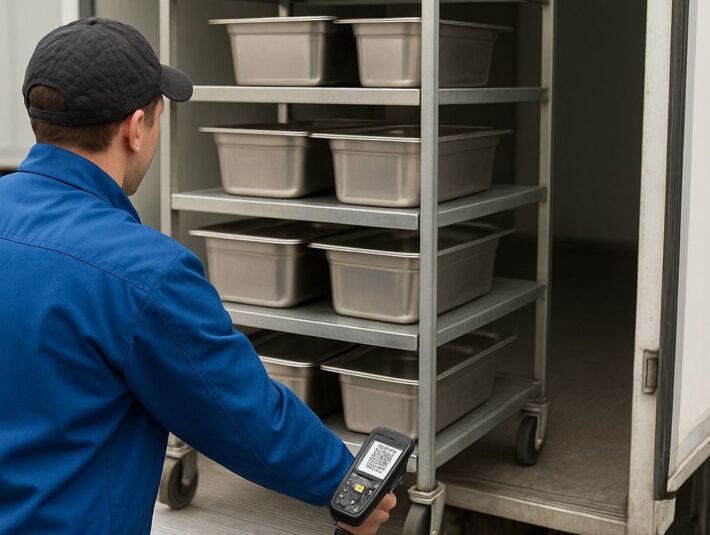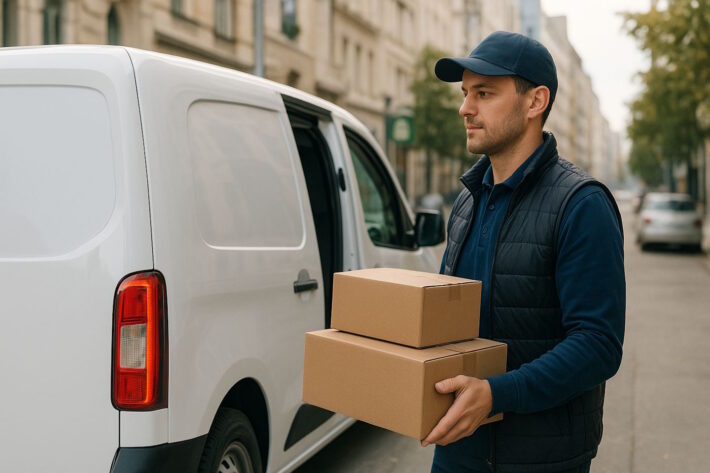E-commerce H1 2025: Falling Average Basket, How to Optimize Logistics?

French e-commerce shows robust health in the first half of 2025 with 7.9% growth according to FEVAD. But behind these encouraging figures lies a more complex reality for logistics players: the number of transactions explodes (+11.3%) while the average basket plummets to €67. Result? More parcels to deliver for less revenue. Analysis of an equation that redefines the rules of the logistics game.
The figures that change everything for logistics
A misleading growth
The first half of 2025 confirms the dynamism of French e-commerce, but with a significant particularity. Online sales progress by 7.9% compared to 2024, driven by an explosion in transaction volume: +11.3% in one year. This spectacular increase in the number of orders nevertheless conceals a worrying trend for the entire logistics chain.
The average basket stands at a significant decline of €67, with a 3% drop for products and 5% for services. This erosion is explained by several converging factors: the reflux of inflation, the rise of the second-hand market, and above all the growing attraction of consumers to low prices and promotions.
Direct impact on logistics flows
This equation creates a major imbalance for carriers and retailers: processing 11% more orders while generating only 7.9% additional revenue means increased pressure on operating margins. Each parcel becomes less profitable to deliver, while volumes to be processed explode.
The figures from the iCE 100 panel confirm this trend: leading sites see their sales progress by only 5.3%, despite the considerable increase in transactions. Sports (+5.8%), electronics (+4.5%), and furniture/decoration (+2.2%) are among the most dynamic sectors, but all are experiencing this margin compression.
Why the average basket is collapsing
The low-price revolution
French consumers have become bargain hunters. Faced with purchasing power under pressure, they systematically favor cheaper channels and products. This search for savings translates into a multiplication of small purchases rather than substantial baskets.
The development of the second-hand market amplifies this phenomenon. Peer-to-peer resale platforms capture a growing share of e-commerce, with prices mechanically lower than new items. This structural trend is unlikely to reverse in the short term.
Fragmented purchasing behaviors
The drop in average basket also reveals a profound change in consumption habits. Online shoppers no longer hesitate to place several small orders rather than one large one, particularly to take advantage of staggered promotions or compare offers between different retailers.
This fragmentation of purchases mechanically generates more logistics flows for the same amount spent. A consumer who would have previously ordered €200 at once now places three €67 orders, creating three separate deliveries to organize, process, and invoice.
Operational consequences for logistics
Explosion of last-mile costs
The last mile traditionally represents 30 to 50% of the total cost of a delivery. With smaller baskets and increasing volumes, this incompressible portion dangerously erodes profitability. Delivering a €40 or €80 parcel costs substantially the same price in terms of transport, handling, and driver time.
Carriers thus find themselves in a delicate spiral: impossible to increase rates at the risk of losing customers in an ultra-competitive market, but difficult to maintain profitability in the face of this inflation of low-margin volumes.
Increased pressure on infrastructure
Warehouses and logistics platforms must absorb these additional flows without benefiting from proportional economies of scale. Processing 11% more orders requires more staff, more picking space, more preparation time… to generate only 7.9% additional revenue.
This asymmetry creates operational bottlenecks, particularly during peak activity periods. Order peaks become more frequent and more intense, complicating human and material resource management.
Complexity of dispatch and planning
With more dispersed small orders, route optimization becomes crucial. Planning algorithms must juggle more delivery points for lower unit volumes, making pooling more complex but also more necessary than ever.
Dispatchers face a daily puzzle: how to efficiently fill vehicles when individual orders are smaller? How to maintain profitable routes with so many additional stops?
Essential optimization levers
Intelligent route optimization
Faced with this pressure, route optimization is no longer an option but a vital necessity. Modern algorithms automatically calculate the most efficient routes taking into account multiple constraints: volume, weight, time slots, geographical areas, driver skills.
The objective is clear: maximize vehicle fill rates while minimizing kilometers traveled. Well-calibrated optimization can generate up to 20-30% savings on transport costs, a gain that has become essential in the current context.
Optimization features allow creating one-off or recurring routes, adapting profiles according to available vehicle types, and readjusting in real time according to field contingencies. This agility makes all the difference between profitable logistics and loss-making logistics.
Dispatch automation to gain productivity
Dispatch automation constitutes the second major lever for absorbing volume increases without exploding structural costs. By configuring automatic assignment rules, companies can instantly process incoming orders without constantly mobilizing their teams.
These rules can be based on numerous criteria: geographical area, type of service, customer, driver availability, delivery urgency. The system automatically assigns each mission to the right courier via push notification, eliminating time-consuming phone exchanges.
This automation frees dispatchers to focus on complex cases and strategic optimization, rather than spending their days manually distributing hundreds of orders. Productivity gains can reach several hours per day, time reinvested in service improvement.
Pooling and flow consolidation
Pooling becomes an essential strategy for making small baskets profitable. By grouping several orders destined for the same geographical area, carriers optimize their fill rates and drastically reduce their costs per parcel.
This approach requires excellent visibility over all flows to be processed and advanced planning capabilities. Modern TMS facilitate this pooling by offering a consolidated view of all orders to be dispatched and automatically suggesting the best possible groupings.
Some players even go so far as to pool their resources with other carriers to maximize efficiency. This collaborative logistics, still emerging in France, could well become the norm given the current economic equation.
Complete digitalization to reduce hidden costs
Hidden logistics costs accumulate quickly: time spent on the phone informing customers, manual dispute management, redundant data entry, paper archiving of proof of delivery. Complete digitalization of these processes generates substantial, often underestimated savings.
Automatic notifications (SMS, email, push) drastically reduce incoming calls while simultaneously improving customer satisfaction. Real-time tracking with dynamic ETAs limits questions about delivery progress. Dematerialization of proof of delivery accelerates invoicing and eliminates paper and archiving costs.
How TMS become indispensable
From “nice to have” to “must have”
For a long time, TMS (Transport Management Systems) were perceived as tools reserved for large logistics groups. The current e-commerce equation radically changes this perception. For transport and retail SMEs, equipping themselves with a high-performance TMS is no longer a luxury but a matter of survival.
A modern TMS offers precisely the answers to current challenges: automatic route optimization, intelligent dispatch, real-time traceability, customer notifications, automated invoicing. These features allow absorbing volume growth while controlling, or even reducing, operational costs.
Immediate ROI on optimization
Investment in a TMS quickly pays for itself in the face of volume inflation. By reducing kilometers traveled by 20% through optimization, a company processing 1,000 deliveries per month immediately saves on fuel, vehicle wear, and working time.
By automating dispatch, 1 to 2 hours are saved per day on manual mission allocation, equivalent to half an FTE reassigned to higher value-added tasks. Automated invoicing accelerates collection and frees up valuable accounting time.
These gains accumulate to create a decisive competitive advantage. While some players continue to manually manage their growth by constantly recruiting, digitalized companies absorb additional volumes with their existing resources.
Response to customer pressure
End customers – whether retailers for carriers or consumers for retailers – have exponential expectations in terms of transparency and responsiveness. The simple “your parcel will be delivered tomorrow” is no longer enough. They want real-time tracking, proactive notifications, the ability to reschedule their delivery.
A TMS allows responding to these requirements without mobilizing entire customer service teams. Real-time GPS tracking, predictive ETAs, branded tracking links, public rescheduling interfaces create a premium customer experience that builds loyalty and differentiates.
In a market where service quality becomes the main differentiating factor in the face of price wars, this dimension is no longer negotiable. Retailers and carriers who don’t offer this transparency progressively lose market share to digitalized players.
The most impacted sectors
Non-food retail on the front line
The sports, electronics, and furniture/decoration sectors certainly show encouraging progress, but are fully experiencing the drop in average basket. These product universes traditionally generate higher baskets, making margin erosion even more sensitive.
Retailers in these sectors must radically rethink their logistics. Ship-from-store, micro-fulfillment, partnerships with local decarbonized carriers: all options are to be explored to maintain delivery profitability.
Fashion and beauty sector under pressure
Clothing and beauty remain stable (+0.1% and +0.6%), which in the current context almost constitutes an underperformance. These historically strong e-commerce sectors struggle to stimulate growth, partly due to fierce competition from marketplaces and second-hand players.
The logistics of these products, often characterized by high returns, becomes particularly complex to make profitable with declining average baskets. Optimizing return flows and reducing return rates through better product information become priorities.
Pure-player e-commerce facing the wall
Historical e-commerce players who built their model on high baskets and comfortable margins must reinvent themselves. The multiplication of small orders erodes their profitability more quickly than omnichannel players who can rely on their physical networks.
This situation likely accelerates sector consolidation. Players who fail to drastically optimize their logistics risk seeing their margins melt to unsustainability. Transport company bankruptcies have already surged, with 636 collective proceedings opened in Q1 2025.
Outlook for the second half of 2025
A trend set to continue
Current signals suggest a continuation of this dynamic in the second half. Order volume progression should remain sustained, but probably less marked than in 2024 when it reached +10%. The average basket, however, should not recover significantly in the short term.
Consumption behaviors oriented toward seeking low prices and frequent small purchases have structurally established themselves. The second-hand market continues to gain market share, mechanically contributing to the decline in overall average basket.
The imperative of adaptation
The players who will emerge winners from this new situation will be those who have been able to quickly transform their operating model. Agility becomes the watchword: ability to continuously optimize, automate repetitive processes, adapt to volume fluctuations without exploding fixed costs.
Technology is no longer optional in this equation. TMS solutions, optimization algorithms, dispatch automation tools now constitute the basic infrastructure to remain competitive. Investing in these technologies is no longer a bet on the future but an immediate response to market reality.
Opportunities in constraint
This margin pressure also forces innovation. New logistics models are emerging: optimized click-and-collect, urban micro-hubs, collaborative delivery, inter-retailer pooling. These creative approaches allow serving more customers for less while maintaining high service quality.
Players who can combine operational excellence and logistics innovation will take a decisive lead. In a market where volumes grow but margins compress, operational efficiency becomes the main competitive differentiator.
Key takeaways
The e-commerce S1 2025 figures draw a new reality for French logistics. More orders but smaller baskets create a complex equation where every euro counts. Carriers and retailers who don’t drastically optimize their operations will see their margins evaporate.
The answer lies in three technological pillars: intelligent route optimization to reduce transport costs, dispatch automation to absorb volumes without massive recruitment, and complete digitalization to eliminate hidden costs.
In this tense context, equipping yourself with a high-performance TMS is no longer a medium-term project but a strategic urgency to maintain your competitiveness and profitability.
Request a demo!




